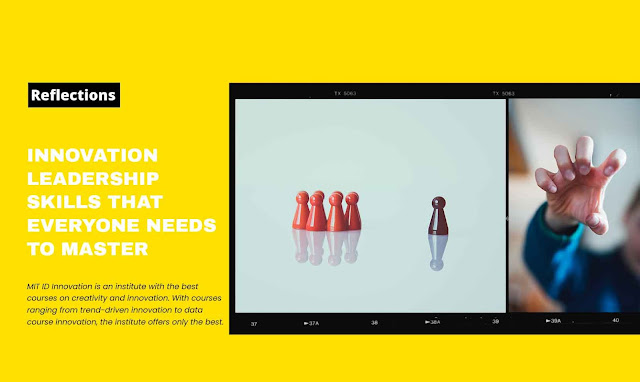Innovation Leadership Skills That Everyone Needs To Master
In a world that is drastically transforming itself, there is no discovery that the corporate world is also changing. According to Forbes' Technology Council members, they predict that 13 jobs will be automated by 2030. Who knows, machines could be achieving at least 70% of jobs that people perform now by the year 2050. But that is years beyond our time, and the only way to move along with today's fast-paced modernized domain is to acquire some innovation leadership skills.
What Is Innovation Leadership?
Innovation leadership is an expression where businesses adopt different methods to create authentic first-of-its-kind kind products and services. Innovation leadership strives to achieve a specific creative goal that changes according to their customers' needs.
Effects of Innovative Leadership at the workplace
The workplace benefits from the extra creativity of the employees since they are motivated to take risks. Harvard business review shows that employees feel psychologically safe to take risks without fearing punishment. The team feels free to put in their opinions and attack any problem from all directions. More so than usual, the team will come up with more solutions than any experienced solo individual ever can.
How can you be an Innovative Leader?
- Opportunistic attitude: You need to see possibilities where some see flaws. When some are preoccupied with minor details, you should see the larger picture, the progress being made, and the vision of how things should be but aren't. You know that your mindset and outlook are the most important factors in your life.
- Never assume: Where assumptions stop, innovation starts. Try starting with questions rather than answers. Human psychology is such that it will create assumptions to save time and energy. Next time you think to yourself, "there has to be a better way," remember that there probably is one.
- Empathize with the customer: Listen carefully to what the customer needs, the challenges they're having, and how you and your company may be able to help them. Empathize with your end-user, whether it's an internal or an external client. If you put yourself in their shoes, you are sure to gain an edge.
- Thinking ahead: It takes practice to develop the ability to spot emerging patterns. With experience, you'll get better at it. It entails predicting where these patterns will lead. Putting the pieces together is a skill that comes with practice. But first, you need those pieces, and they come when you consume a huge amount of information regularly. So read books, reports, articles, and anything insightful.
- Ideate: Getting ideas is less about luck and more about having a proper mindset. Especially when your line of work needs you to churn out new ideas regularly, try being mindful of your surroundings. Airplanes were invented after observing birds; the Opera house was built after observing an orange being peeled, and gravity was discovered because of an apple! Look around you, and you will find plenty of ideas.
How can MIT ID Innovation help you develop?
It's not about using design thinking tools or having a large R&D budget to be a pioneer in innovation. It's about mastering a collection of ideologies, skills, and attitudes that allow and inspire you and those around you to achieve world-class results consistently. And investing in building and reinforcing these skills will show you some spectacular benefits in your professional life.
MIT ID Innovation offers various courses in innovation and design to help you tap your full potential. You can choose from various online courses or join their one-year flagship program that will provide you with practical experience. So what are you waiting for? Start now by registering on their website.


.jpg)
Comments
Post a Comment